How It's Made
Getting to Know the Data Scientists at Instacart
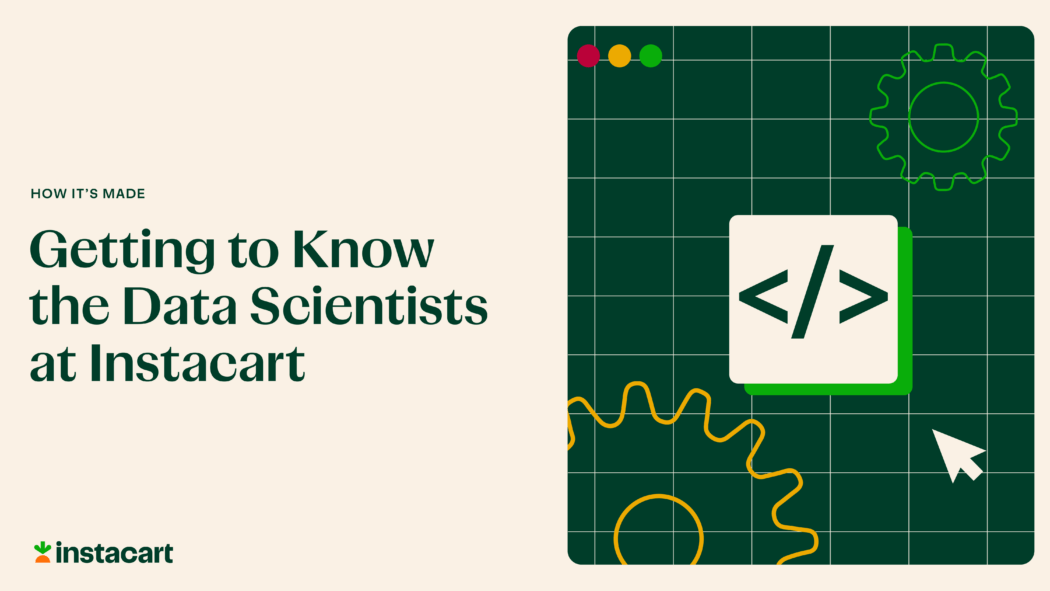
Our Data Science team at Instacart is responsible for all data analytics, insights and experimentation at the company. The team partners with our Product and Engineering teams on all stages of the product life cycle, from ideation and prioritization, to execution, iteration and optimizations on all our product lines.
We caught up with a few of our data scientists to learn more about their Data Science journey and what brought them to Instacart.
Meet Ben Moore, Senior Data Scientist, Ads
Tell us about your Data Science journey and what brought you to Instacart.
After graduating undergrad with a degree in Finance, I found myself working on the Strategy team of an analytics consulting firm. Out of pure necessity to respond to client asks, I learned SQL at night from some co-workers on our Operations Research team. Over time, writing SQL – and then eventually Python – became a creative outlet for me to be able to ask and answer virtually any question I could think of. Finding myself initially limited to questions surrounding client businesses and data, I dove into learning Python web scraping outside of work so I could answer the questions that really interested me, such as how much salary cap would my favorite professional hockey team have during the offseason and would it be enough to trade for my favorite players. Intent on both spending more of my time with this type of work, and having access to more data, I moved to Instacart and started analytically supporting the Strategy team. Eventually, I was promoted to formally join the Data Science team, where I have found a home in the science-heavy world of ads.
Briefly describe your team and role. What types of problems do you work on and how does your work add value to the company?
While I spent my first two-plus years at Instacart working across Fulfillment, I have spent the last year and a half working in our Ads Quality team. We are tasked with Ads ranking, relevance, and pricing. I was initially drawn to this team based on the velocity of experiments we could run and Data Science being at the core of road mapping and decision-making. We build and iterate on mechanisms in our auction to ensure (a) advertisers are seeing incremental sales from their spend, (b) consumers are seeing relevant ads, and (c) Instacart is helping to grow revenue for our retail partners. Our Marketplace serves so many types of retailers, advertisers, and customers, that rarely does one size fit all. Data Science drives much of the roadmap in terms of both metric creation (such as how to measure incremental sales) as well as product iteration (such as how to set prices).
How do you collaborate with Product and other cross-functional teams?
The main counterparts on my team are Product Managers, Software Engineers, and ML engineers. Typically PMs and Data Science work together to set the high-level strategy. Data Science contributes to this in terms of finding areas of opportunity, such as supply and demand mismatches. Data Science will typically take the high-level strategy and design experiments to assess the proposed changes. Generally, machine learning and software engineers will build and implement the changes. On occasion, we will overlap with our Brand Sales team on changes such as pricing or our Retailer Business Development team on changes such as enabling advertisements on additional item SKUs.
What is the most exciting project / insight you have worked on?
In mid-2020, just after the pandemic started and Instacart’s consumer base was growing heavily, we were running into a few challenges with our first price auction model. With this type of auction, advertisers felt they were blind to competition and had less confidence in understanding the price spent across the auction. In order to unblock this and give brands for visibility, we needed to move to a second price auction. At a time when the company needed to support our growing base of customers and shoppers, while also providing a space for advertisers to invest in, what was always going to be a challenging technical project also became a highly visible political project. Data Science was at the forefront of a cross functional team that included product managers, engineers and our leadership team.
Meet Konrad Miziolek, Senior Data Scientist, Marketplace
Tell us about your Data Science journey and what brought you to Instacart.
I studied biology for my undergrad, and while I thought my interest was in entomology (insects, and particularly ant colonies), in retrospect it was in complex systems and emergent behavior. For my Master’s, I studied Systems Science, which is an unusual field in that it cuts wide across disciplines instead of deep in a single one. I’m biased, but I think it offers an interesting perspective and tools for problem solving and working with complex systems, whether that’s a marketplace, or the organization of people who build it.
When I was in grad school, I started working for a local bikeshare company, which was an excellent first job to learn and apply my technical skills, and improve operational efficiency. Lyft acquired the bikeshare company, and it was with Lyft Bikes & Scooters that I first got exposure to data (and data science) at scale. Eventually, the combination of Instacart’s four-sided marketplace, and opportunity for ownership were compelling, so even though it wasn’t yet a household name, I joined Instacart in 2019.
Briefly describe your team and role. What types of problems do you work on and how does your work add value to the company?
I’m currently splitting my time between two projects as the DS lead: Marketplace Experimentation and Marketplace Balancing.
Improved experimentation methodologies and tooling allow us to evaluate product changes more quickly, and make more accurate decisions in a multi-sided marketplace. A couple ongoing projects I’m excited about are adaptive experimentation, in which variant weights change during the experiment, and adding tooling for experiment paradigms we’ve historically run offline, such as geo-experiments. Since we have a handful of contributors across multiple projects, most of my work is on planning, coordination, and prioritization, though I still have opportunities to be more hands-on.
Marketplace Balancing, the product team I work with most closely, is focused on improving customer availability through paid or non-paid levers, while balancing work availability for shoppers. My role is designing and analyzing experiments, identifying ways to make the marketplace more efficient (whether via new levers, or improving existing ones), and helping set product strategy.
What are some unique challenges that you face as a Data Scientist?
One of the key challenges of being a Data Scientist, especially embedded in a product team, is influencing without authority. Since DS at Instacart doesn’t directly own the product, nor the implementation, it can be a challenge to translate an idea into impact. I’ve found that the timing matters (a good idea doesn’t exist in isolation – the business context and competing priorities matter), as does communication (having the right tactics for the right audiences, from the one-pager that can be circulated broadly, to the right deck for a leadership forum).
Another challenge (or perk, depending on your working style!) is that Data Scientists typically work on multiple projects at a time. We usually have a handful of concurrent experiment designs, analyses, community projects, etc. This exposure is helpful to learn and grow quickly, but requires prioritization.
You’ve worked at several different levels of DS at Instacart over the last ~3 years. How have the expectations of your role changed, and what advice do you have to more junior Data Scientists?
The primary measure of performance is the impact you drive. Projects tend to be larger, more strategic, and take longer from start to end. You’re also expected to have more of a voice, from speaking up in meetings to driving initiatives forward.
These components show up in our rubric, but it is intentionally not prescriptive, since the path to impact looks different for each person. What I’ve found helpful is the umbrella of “ownership”, which you can demonstrate by becoming deeply familiar with the product you work on, and being proactive in identifying or making improvements. By doing that, and signing up for more opportunities as they come up, you demonstrate autonomy and show readiness to take on larger projects, which tends to compound into higher impact over time.
Meet Pedro Tanure Veloso, Data Scientist, Value
Tell us about your Data Science journey and what brought you to Instacart.
My journey started near the end of my PhD program in Economics. At that point, it became clear to me that I wanted to apply the powerful tools of statistical analysis and causal inference I learned during my studies to a fast-paced environment with real impact. Data Science was a natural next step to me. When applying for jobs, the challenging four-sided nature of Instacart’s business (customers, shoppers, retailers and CPG partners) attracted me right away. I was offered a position, and started right after graduating. It’s been a fun ride ever since!
Briefly describe your team and role. What types of problems do you work on and how does your work add value to the company?
I work with cross-functional teams to help our customers get the best prices during their shopping experience, and make sure our pricing balances profitability, growth and retention. My role is to generate new insights from our data that will help drive product decisions. I also evaluate the performance of new product launches. These tasks sometimes require designing and analyzing experiments inside our marketplace. When experimentation is not an option, I use causal inference techniques to guide decision-making.
What do you like most about working at Instacart?
The best part of my job is definitely working with my teammates. I have the privilege to work with a group of smart, impact-driven people that always push me to give my best. I am always learning something new and important that helps my career develop.
What is the most exciting project / insight you have worked on?
Working with pricing has been quite fun because I can experience in real life what I learned in textbooks and research. There are several interesting projects in this space, but there is an important takeaway that applies universally: There can be large differences between short- and long-term customer reaction to price changes. It’s crucial for the Data Scientist to develop a framework that can estimate and properly account for intertemporal dynamics.
Meet Radhika Anand, Data Science Manager, Shopper & Fulfillment
Tell us about your Data Science journey and what brought you to Instacart.
After graduating from the Statistical and Economic Modeling program at Duke University in 2015, I started working as a Data Scientist in the Strategic Finance team at Uber. I used DS skills such as predictive modeling and time series forecasting to add rigor and scale to the annual financial planning processes at Uber. I then headed to Airbnb to work on their Homes Host product, working across product strategy, inference and analytics. In 2020, I made the move to Instacart to work as a Data Scientist on the Shopper & Fulfillment team. I was inspired by the role Instacart played in helping our community during the Covid spike of 2020, and at the same time impressed by the company’s ability to rise up to the challenge and scale their systems to meet the unprecedented levels of growth and demand. Having worked at gig economy companies like Uber and Airbnb before, I could easily understand the challenging nature of Instacart’s business and how data would be at the core of decision making. I was very excited about the uniquely challenging Data Science problems that Instacart faced through its four-sided marketplace and wanted to be a part of this incredible journey.
Briefly describe your team and role. What types of problems do you work on and how does your work add value to the company?
I lead the Shopper Data Science team at Instacart. The mission of the Shopper Team is to welcome shoppers to the Instacart platform and ensure they have a satisfying experience, where they can earn a livelihood with dignity, on their own terms. The Shopper Data Science team supports the entire shopper journey on the platform, from onboarding shoppers to making sure they can easily find and fulfill work to make their desired earnings on the platform. We also work on the Instacart Shopper app to ensure shoppers have a seamless experience while navigating our app and the stores. The Data Science work spans across feature ideation, product strategy and analytics, designing and analyzing complex experiments, modeling and causal inference and conducting data driven deep dives to provide actionable insights to advocate for our shopper community and further our business.
What do you like most about working at Instacart?
Instacart’s four-sided marketplace and the unique challenges that come with it make Instacart a truly interesting place to work for and one that absolutely requires data to sit at the core of all decision making. As a Data Scientist at Instacart, I have the power to influence what we build, how we build it and be a part of the entire product lifecycle. This makes working at Instacart a very meaningful and impactful experience. Another thing that I love about working at Instacart is how deeply invested we are in understanding our customers and shoppers. Even as a Data Scientist, I get to be a part of our shopper interviews which is a very humbling experience and honestly the best way to understand what to build to make a meaningful impact for the community that we serve.
What do you think are the most important skills to be successful as a Data Scientist?
The most important skill to be successful as a Data Scientist at an early stage, fast-moving company like Instacart is to master the art of balancing speed versus accuracy. Data Scientists can often get caught up in going too deep, trying to get the most accurate answer, trying to look at every possible edge case of a problem that we tend to slow down and lose sight of the bigger picture. Making the right judgment call of where it’s important to go deep vs not becomes very important to succeed. Another important skill for a Data Scientist is to understand the problem we are trying to solve, why we are trying to solve it and how it ties to our business before jumping to the solution, in order to propose the best and the simplest solution to solve the problem at hand. And obviously since the field of Data Science is evolving at a lightning speed, it’s essential for all of us to keep learning and evolving everyday!
Meet Shyue-Ming Loh, Staff Data Scientist, Foundation
Tell us about your Data Science journey and what brought you to Instacart.
I have a graduate degree in Statistics and an undergraduate degree in Applied Mathematics/Economics and had previously worked in various statistics- or data-science-related roles in tech companies, including an online education startup and two startups that offered pricing optimization software as a service. Prior to joining Instacart, I was a Data Scientist at Google, where I spent about 5 years in the Display Ads Data Science team working mainly on the meta-analysis of experiment results and the last 2+ years in the Cloud Products Analytics Data Science team working mainly on experimentation and causal inference. I personally found my time at Google Cloud in the last few years quite rewarding in terms of what I learned on experiment and causal inference methodology and practice. This explains one motivation for my joining Instacart —the opportunity to work on interesting problems in experimentation and causal inference in an impactful way, leveraging what I learned previously.
Briefly describe your team and role. What types of problems do you work on and how does your work add value to the company?
I am a Staff Data Scientist in the Foundation team at Instacart, a team that focuses on foundational problems, including experimentation and latency. Since joining the team in June 2022, I have been working mainly on experimentation, in the following ways:
- Experiment Methodology and Platform: I work closely with the Foundation Experimentation Engineering team to implement methods to improve experiment analysis and design on Expy, Instacart’s main experimentation platform; these methods include covariate adjustment, power analysis, and adaptive experiments.
- Consulting and Best Practices: At the same time, I work with cross-functional partners to provide consulting advice and establish best practices for experimentation, causal inference, and incrementality measurement at the company.
Instacart has a very strong experimentation culture, and many critical decisions at the company are made based on experiments, so inaccurate and delayed experiment results are costly. My work adds value to the company by increasing the accuracy and velocity of experiment results through improved experiment methodology and practice.
Data Science is constantly evolving. How do you keep up with the changes – any resources to share?
One way I keep up with the changes is by reading. One can generally read in two ways—reading for general interest, which one can do casually, and focused reading on specific topics, to get a better understanding of the current research on the topic. I do more of the latter, especially in relation to my current work. Typically, to better understand a specific topic, I would survey existing literature—including books, journal articles, blog posts, and other relevant materials—most of which can be accessed through a search on the web. So through this exercise, I indirectly help myself to keep up with the new developments.
What are some unique challenges that you face as a Data Scientist?
One challenge faced by data scientists working on experimentation and promoting experimentation best practices is to ensure that experiments are sufficiently powered within reasonable durations, so that statistical error rates are not elevated. This could be difficult at times when experiments are measuring very small effect sizes, some of which require at least 4 million users per arm to achieve 80% power. Another challenge is ensuring that we have sufficiently addressed concerns for potential bias in more complex study designs—e.g., adaptive experiment designs and observational studies.
Most Recent in How It's Made
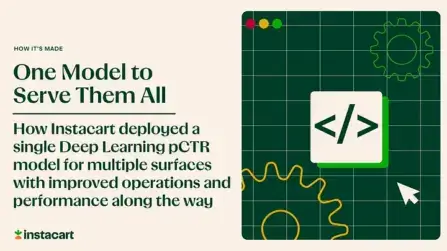
How It's Made
One Model to Serve Them All: How Instacart deployed a single Deep Learning pCTR model for multiple surfaces with improved operations and performance along the way
Authors: Cheng Jia, Peng Qi, Joseph Haraldson, Adway Dhillon, Qiao Jiang, Sharath Rao Introduction Instacart Ads and Ranking Models At Instacart Ads, our focus lies in delivering the utmost relevance in advertisements to our customers, facilitating novel product discovery and enhancing…
Dec 19, 2023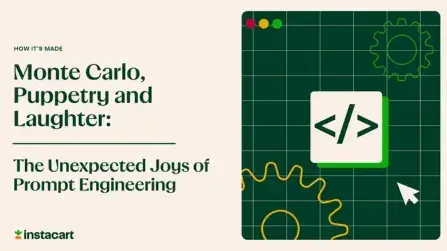
How It's Made
Monte Carlo, Puppetry and Laughter: The Unexpected Joys of Prompt Engineering
Author: Ben Bader The universe of the current Large Language Models (LLMs) engineering is electrifying, to say the least. The industry has been on fire with change since the launch of ChatGPT in November of…
Dec 19, 2023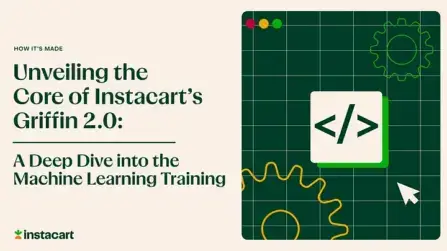
How It's Made
Unveiling the Core of Instacart’s Griffin 2.0: A Deep Dive into the Machine Learning Training Platform
Authors: Han Li, Sahil Khanna, Jocelyn De La Rosa, Moping Dou, Sharad Gupta, Chenyang Yu and Rajpal Paryani Background About a year ago, we introduced the first version of Griffin, Instacart’s first ML Platform, detailing its development and support for end-to-end ML in…
Nov 22, 2023

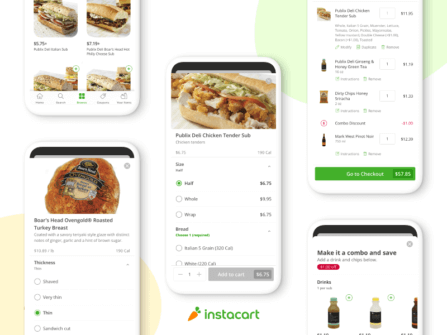 Building Instacart Meals
Building Instacart Meals 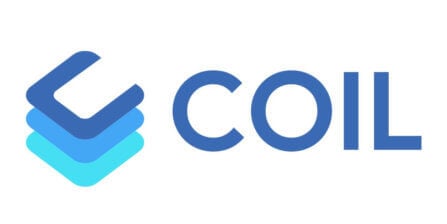 Introducing Coil: Kotlin-first Image Loading on Android
Introducing Coil: Kotlin-first Image Loading on Android  7 steps to get started with large-scale labeling
7 steps to get started with large-scale labeling 
